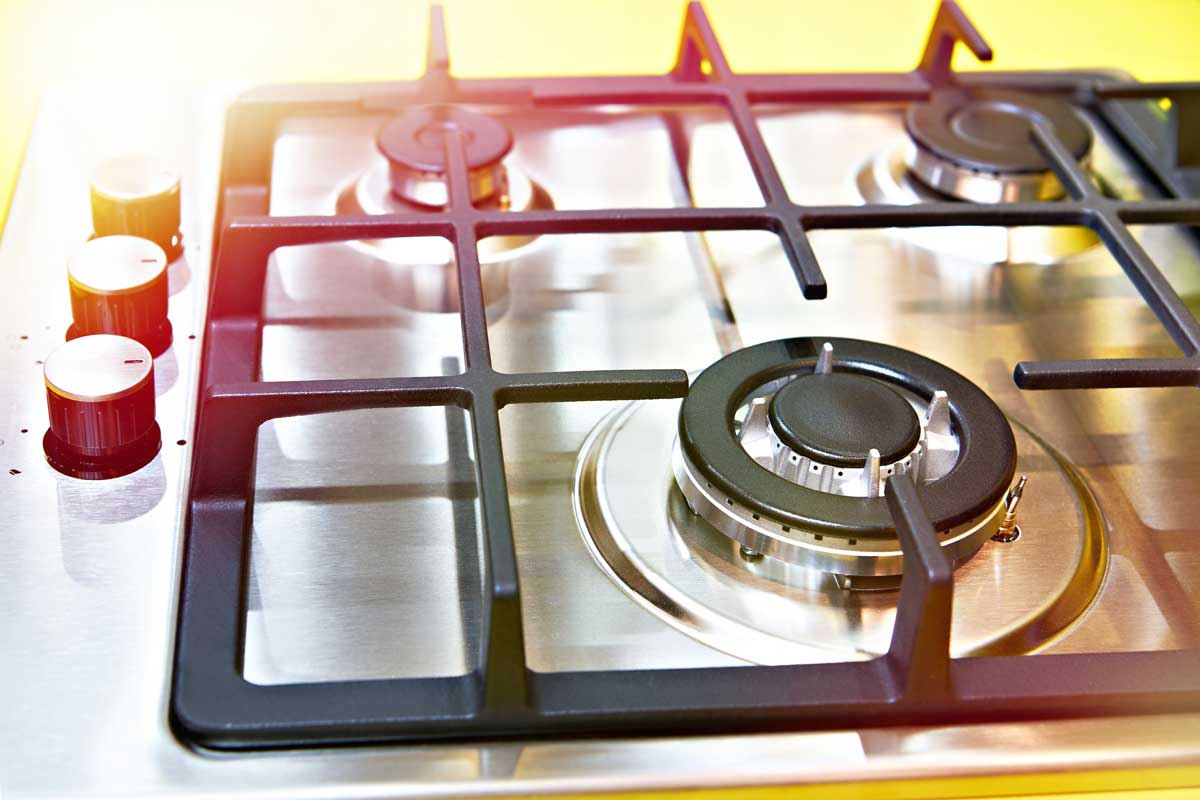The panicked emails and DMs I got about gas stoves last week were perhaps best summarized by a message on Sunday. I had indicated I’d cover this this week, and the person simply asked, Can you tell us the bottom line RIGHT NOW, because I’m planning to buy a new stove today?
I am sorry!! ParentData aims to be responsive, but I also aim to be thoughtful and complete. However: given these messages, this is going out a day early. I hope it’s helpful!
For those of you who missed it, last week headlines circulated like this one, in the Washington Post: “Gas stove pollution causes 12.7% of childhood asthma.” The concern is that gas stoves emit high levels of nitrogen oxides, and those pollutants could lead to respiratory issues in children. There is some talk of the Biden administration banning gas stoves, although this seems unlikely to me.
This newsletter will dive into this concern. I’ve talked about it before, but this is a time for a more detailed dive (this is part of what I love about this newsletter — an opportunity to revisit topics when they arise again).
Please note: Today I am going to focus on the particular question of gas stoves and asthma in children. However, it’s important to note that there are a wider range of climate-related problems with gas stoves. A 2022 paper found that gas stoves emit methane, even when they are off. Both state and federal regulators have at various times discussed regulations on gas ranges, for both these environmental and for health reasons. There are complexities related to electric stoves too — for example, if the electric grid is powered by coal, that’s potentially worse in terms of carbon footprint — and these issues are changing over time. But moving away from gas for climate reasons is something that I know many people have considered.
These are extremely important issues, but not what I want to focus on here.
This new paper
The new paper causing all the headlines is here. This paper is, in essence, a multiplication exercise.
What the authors do is the following. They begin with an estimate based on other papers of the excess risk of asthma among children with exposure to gas stoves. There is an existing literature on this (which I will discuss extensively below). The estimate they pull from it is a 34% increase in the risk of asthma with exposure to gas stoves.
They then use this number alongside an estimate of the share of households with gas stoves. They calculate what is called the population attributable fraction, or PAF. Intuitively, think about this as saying: “Gas stoves increase asthma by 34%; we have such-and-such many gas stoves; therefore, asthma is increased by this amount, and that’s a percentage of the total.” In their case, they estimate 12.7% of asthma cases are caused by gas stoves.
There is nothing wrong with their calculation — it is a standard approach to doing this kind of research. But: it is dependent on an assumption from existing literature about the relationship between gas stoves and asthma. So to evaluate this claim, we need to go back to that literature.
Gas stoves and asthma
The key input to the calculation in this new paper is an estimation of the relationship between gas stove ownership and asthma. The figures used are based on papers that take a familiar shape. They compare asthma rates between children whose families use gas stoves and those whose families do not.
A 2013 meta-analysis combines 41 of these papers. The estimates from the papers vary widely — from those that suggest no link up to those that suggest gas stove ownership could double asthma rates — but when combined together, the estimate is that gas stove ownership increases asthma rates by about 30%. In the U.S., an estimated 8.3% of children have asthma. These results therefore indicate gas stove ownership could increase the risk of asthma by 2.8 percentage points.
As with any analysis of this type, though, we may have concerns that the ownership of gas stoves is not random. It’s worth diving into some of the individual papers.
A 2004 study of about 6,000 children in Russia found an increase in doctor-diagnosed asthma for children living in homes with gas cooking. This is the study in which the risk of asthma is doubled in homes with gas cooking. However, the paper runs lots of analyses, and they do not all line up — for example, they find no evidence that gas cooking increases wheezing or asthma-like symptoms — making it possible that some of what they are seeing in the data are diagnosis differences.
Among the largest papers in the meta-analysis is a 1991 publication that looked at the determinants of asthma and wheezing in nearly 18,000 children in Canada. The authors find that gas cooking is significantly associated with asthma (but not wheezing) in the data. They caution that only a very small share of respondents (about 5%) use gas cooking.
For the most part, the other papers in the meta-analysis have similar features. They tend to show positive correlations between asthma and gas stove exposure, but the effects are a bit noisy and they do not necessarily paint a consistent picture. A 2013 paper finds, for example, a link with asthma for girls but not boys, and no links with other respiratory issues.
What to take from this? We know that gas stoves emit nitrogen oxides and that, in general, those are not good. We know that air pollution, in general, is bad for respiratory symptoms, including asthma. So it seems very plausible that there is some link here. However: the magnitude is likely small. In most of the estimates, it’s small. And, beyond that, we do not see the kind of smoking gun in any of these data that would suggest a really consistent link.
Another way to put this is that there are clearly many, many factors other than gas stoves that explain asthma. Some of these may also be environmental. But I’m skeptical that gas stoves play a huge role, as would be suggested by the new paper. One way to conceptualize that is to look at broad variation across space.
The graph below shows the gas stove ownership share (from the American Housing Survey conducted by the U.S. Census Bureau) for states for which we have measurements, graphed against childhood asthma rate. There is no striking relationship. Even though Illinois has a much, much higher share of gas stove ownership, the childhood asthma rate is lower than in Florida, with very low gas stove ownership. Does this mean that gas stoves do not matter? No. But it suggests other things matter a lot more.
Big picture
It is easy to get into the weeds here, and the reality is that this is a hard problem. Gas stoves emit nitrogen oxides. We know that generally air pollution (which includes nitrogen oxides) can exacerbate respiratory issues. Indoor, unventilated air pollution is especially problematic. There may be reasons to move away from gas stoves for climate reasons.
On the other hand, I think the evidence suggesting this factor is responsible for a sizable share of asthma in kids is probably overstated. The papers on this are mixed, the cross-sectional relationship at the state level is nonexistent. And there are reasons to own gas stoves — namely, you may already have one and it’s expensive to replace, and people like cooking with fire.
Given the in-the-weeds nature, I think it’s useful to boil things down to specific questions.
Should I replace my gas stove right now?
This is not likely to be necessary for most people. However: if you have a child with (or at risk for) asthma, it is something to consider, as you may want to remove any exacerbating features. If you do not, this is not a change with urgency.
Should I replace it later?
Perhaps. There are the (complicated) climate issues noted above, and, in general, if given a choice, less pollutant exposure is better than more. So if you were choosing anyway, it may well make sense to move away from gas.
Induction cooktops perform well, with more energy efficiency than electric and none of these air pollution issues. If I were redoing my kitchen, I would replace our gas stovetop with induction. Here is a long Consumer Reports discussion of induction cooking. For some people, the love of cooking with fire will continue to dominate.
Can I do anything now?
Assuming you are not replacing your gas stove now, is there anything you can do?
Yes.
First, run the hood fan on your stove when you use it. It’s not clear how much this matters, but on the margin it should help.
Second, use a HEPA filter with an activated carbon filter. At least one study showed that installing such a filter in the kitchen lowered nitrogen dioxide levels by half as much as replacing the stove. This is a lot more effective in the data than the hood fan.
One final note: In the U.S., asthma is much more common in poor children and children of color. Poorly ventilated apartments, possibly with gas cooking, are also more common in those groups. There has already been some discussion of a policy need to ban gas stoves, partially motivated by these reasons.
This overall analysis, though, suggests that factor may be small relative to other factors — including other kinds of air pollution from (say) cars. Addressing these inequalities in health is a crucial issue for policy. Equally crucial, though, is to focus on policies which work. Gas stoves are likely a very small part of the picture.
Community Guidelines














